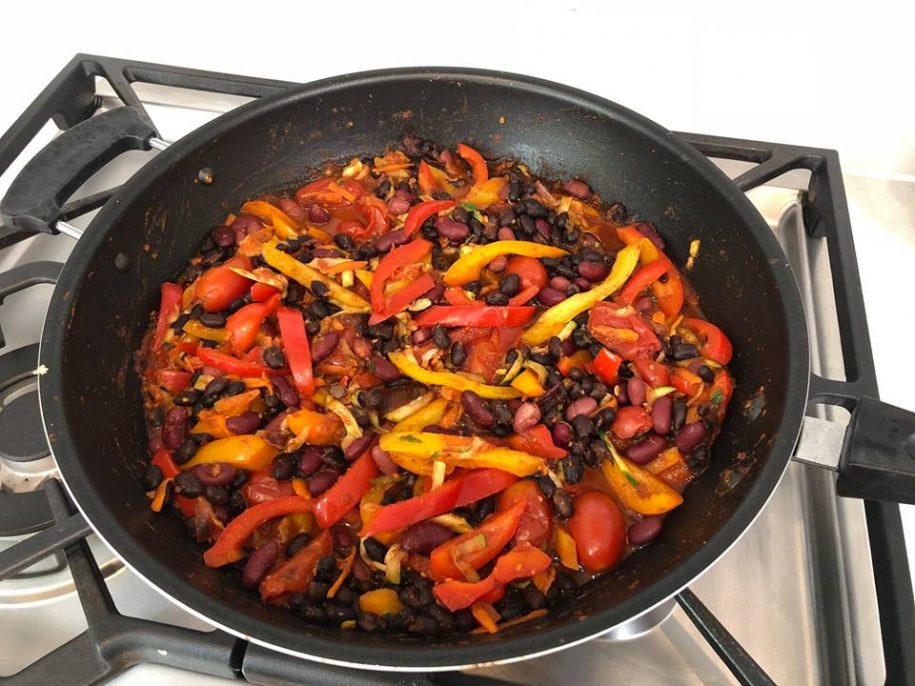MIXED BEAN CHILLI
Just made a big pot of chilli which I am going to portion out and freeze for easy dinners. As I use it I will post photos of what I have done with it.
I made a mexican spice mix with sweet paprika, cumin, onion powder, garlic powder, black pepper, chilli powder, oregano and cinnamon.
Saute 1 red onion in a little coconut oil. When translucent, add the spice mix and continue to saute. Add 2 red and 2 yellow peppers sliced and stir to get spice mix evenly distributed. Grate 1 carrot and 1 courgette and add to pan and stir. Add two tins of tomatoes (I like to use cherry tomatoes) and let cook till it starts to bubble. Add 4 cloves of garlic crushed. Give a good stir and let cook for about 5 mintues. Then add 2 tins of black beans and 1 tin of kidney beans (which have been drained and rinsed until all the bubbles disappear) and stir again. Let cook for another 5 minutes. It is now ready. The peppers still have a bit of bite to them and the grated courgette and carrot add a nice thick consistency so it is not too sloppy.
Black beans are a very good souce of fibre and protein. They are also good sources of the minerals molybdenem, magnesium, iron and the Vitamins folate and B1.
Here are two more reasons why black beans are good for us!
Black beans contain a large amount of “resistant starch”, which means it is not fully broken down in the small intestines because it “resists” digestion. As the starch does not break down it does not cause an increase in our blood sugar levels and our insulin response is not increased. (The breakdown of starch creates an increase in simple sugars which creates an increase in insulin response).
Instead resistant starch makes its way to the large intestine (colon), where intestinal bacteria ferment it. When resistant starch is fermented in the large intestine, short chain fatty acids (SCFA’s) are produced. SCFAs can be absorbed into the body from the colon or stay in the colon and be used by colonic bacteria for energy.
Evidence suggests that SCFAs may benefit us by:
– stimulating blood flow to the colon – increasing nutrient circulation – inhibiting the growth of pathogenic bacteria
– helping us to absorb minerals.
The amount of SCFAs we have in our colon is related to the type of carbohydrate we eat – so if we eat a lot of resistant starch we have a good supply of SCFAs.
Resistant starch is also found in: Oats, Rice, Legumes and other Beans. Oats and Rice which have been cooked and then cooled have even higher levels of resistant starch, so any rice salad variations would be a very good option. (Not sure that cooked and then cold oats sound that appealing!)




